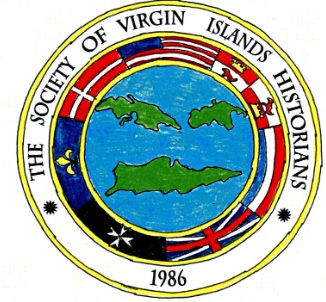The Harbor Still Hears Them Coming.... 1914 & Now 2025 (Part II)
- S.A. Beach

- Nov 5
- 3 min read

By Stephanie Chalana Brown, October 2025

By 1917, Denmark sold the islands to the United States for twenty-five million in gold, an empire converting anxiety into currency. The transfer secured not only a sale but a permanent garrison, America’s first Caribbean foothold, the beginning of the same military geography that endures today.
-Udenrigsministeriet memorandum, 26 February 1914
“There have … been instances where foreign warships have arrived without prior notification … The Government must, whenever such occurs, draw attention to the fact that the current regulations presuppose prior notification.”
The caution endures.
Today the waters between St. Thomas and Puerto Rico shimmer with the same choreography: U.S. Coast Guard patrols, NATO exercises, research ships tracing deep-sea cables. The Virgin Islands remain strategic, surveilled, and seldom asked. Yet the cast of visitors has widened, Chinese research vessels, European climate missions, private maritime contractors mapping the seabed for data and extraction. The empire of flags has become an empire of frequencies.
Governor Albert Bryan Jr. phrases the tension carefully:
“We’re part of a regional network, but our first duty is to our local safety and infrastructure.”
“The Virgin Islands’ position in regional security is both strategic and vulnerable.”
It is the voice of a small territory inside large arrangements, measured, aware that geography has consequences. The Danish clerks once demanded notice of every ship; the modern governor asks for inclusion, for transparency, for acknowledgment that the Caribbean is not merely a backdrop for other nations’ maneuvers.
St. Thomas has changed its cargo. Coal has become data; neutrality has become negotiation. The same harbor that once refueled steamships now services fiber-optic networks and cruise economies, still dependent on arrivals it cannot command. The continuity is structural, not symbolic. To live here is to conduct diplomacy with the sea itself.
-Udenrigsministeriet memorandum, 21 February 1914
“It has here been decided protocol regulations for how one shall proceed when, in the West Indies, there is question of visits by foreign warships … such that it can be avoided that such visits without proper notification will be of inconvenience.”
That bureaucratic phrasing could headline tomorrow’s press release. The Caribbean is again full of arrivals, explanations following after. Zahle’s signature at the top of the page reminds us that even distant capitals feel the weight of these islands. Helweg-Larsen’s telegram reminds us that neutrality was always a performance. Bryan’s statement reminds us that history rarely ends, it just docks under a new flag.
The harbor remembers all of it, the Bremen, the sale, the Cold War submarines, the present fleets that come bearing partnership. Water has a better memory than stone. Anchors strike the same notes they did a century ago.
And if you listen from the hill above Charlotte Amalie, past the ferry horns and the hum of engines, you can almost hear Zahle’s careful typewriter murmuring through time: notify us before you come.
Sources
All Danish archival material quoted in this essay is drawn from correspondence housed in the Danish National Archives (Rigsarkivet), Copenhagen, under the collection:
Central Directorate for the Colonies, The Colonial Office: Men-of-War in St. Thomas Harbour.
Udenrigsministeriet, 1ste Departement, Journal No. 55:M.6 (December 1913 – February 1914).
"Correspondence with the Colonial Government of the Danish West Indies regarding the presence and reporting of foreign warships.”
Signed by Herluf Zahle, Chief of the 1st Department, Danish Ministry of Foreign Affairs.
Referenced folios 19–26 (image 20 of 365) in the digitized Rigsarkivet Online system.
Additional context:
Lars Christian Helweg-Larsen, Governor of the Danish West Indies (1911–1916).
Carl Theodor Zahle, Prime Minister of Denmark (1913–1920).
Sale of the Islands finalized 31 March 1917 for $25 million in gold.
Contemporary remarks by Governor Albert Bryan Jr. derived from official Government House briefings (vi.gov 2025) and regional security statements published by The Virgin Islands Consortium* (April–June 2025).
Jespersen, Knud J. V. Denmark and the Danish West Indies, 1816–1917. Copenhagen: Rigsarkivet Publications, 1998.
Knight, Franklin W., and Thomas, Colin A. The Caribbean: The Genesis of a Fragmented Nationalism. Oxford University Press, 1990.
Heuman, Gad. The Caribbean: A Brief History. Bloomsbury, 2014.
© Stephanie Chalana Brown, The Harbor Still Hears Them Coming, 2025.
Text, visual composition, and interpretive framework by the artist.
Archival materials referenced from the Danish National Archives (Rigsarkivet) and the Danish Film Institute (DFI/Museum & Cinematek), used under fair scholarly and cultural commentary.
This work forms part of the #ChalanaArchives series, a living archive connecting Danish West Indian correspondence, Caribbean sovereignty, and modern surveillance through visual and textual storytelling.America’s first Caribbean foothold, the beginning of the same military geography that endures today.

Comments